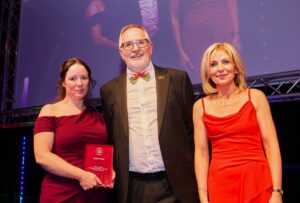Veg Patch Wales needs your help identifying spaces of land
Unused spaces here in Wales like the land between buildings, derelict warehouses, or on the sides of roads owned by councils could soon breathe new life as part of a new project focusing on ‘accessing space for food’. The partnership between Monmouthshire County Council, Rhondda Cynon Taff County Council, Linc Cymru Housing Association and Natural Resources Wales, turns publicly owned, unused spaces into gardening havens to grow fruit and vegetables for local communities.
Tom Marshall, now Assistant Project Director at Local Partnerships and previously of Natural Resources Wales, is a key member of a cohort taking part in the CEIC programme. That programme’s attendees focused on different challenges facing Wales and the economic climate, and this group came together to understand the issues facing underutilised land, and how collectively they could be turned into areas of growth and opportunity.
He said: “The idea came from us discussing the word space, rather than land, be it a warehouse, grass verge and everything in between. These spaces were easily accessible, but people couldn’t just turn them into whatever they wanted, it had to go through a long process, and often a painstaking one. The dream was to create outlets for local communities to come and grow and eat their own fruit and vegetables, from as close as down the road. During such times of uncertainty, having local produce on your doorstep not only encourages healthy eating, but also significantly reduces that carbon footprint if you can walk and pick your own produce.
“So, this is where we came in. We talked to Valleys to Coast Housing Association who were doing a pilot scheme with some residents by taking over a courtyard and turning it into a growing area. This inspired us as a group to look at other spaces that could be turned into something positive for local communities, and we developed a toolkit that anyone can use.
“We have created a resource website called The Veg Patch, which is designed to be a one-stop-wheelbarrow of food growing information from connecting with fellow growers to understanding the resources and tools you need to make a success of your food growing projects. It directs potential food growers to the right people for accessing growing space, provides guidance for making the most out of any sized spaces you might have for growing food, as well as the necessary advice for who to talk to and how to turn unwanted space within public ownership into something the whole community can enjoy. For example, the smallest of spaces could yield 10 pounds of edible produce, and a larger space 100 foot long could grow enough produce for a family of four.”
The website exists only as a prototype, but the team is now looking for local authority groups and community garden enthusiasts to help populate the site and take this project forward. It has not been created as a commercial tool, it should continue to be free to use and the more people who turn their local unused spaces into something meaningful and beneficial, the better it will be for now and future.
To help Tom and the team bring Veg Patch Wales to life near you, please contact CEIC directly through their website.
Tom’s cohort was part of the Circular Economy Innovation Communities (CEIC) project, which brings public and third sector organisations across South Wales together to create collaborative innovation networks that work towards a more sustainable future.




